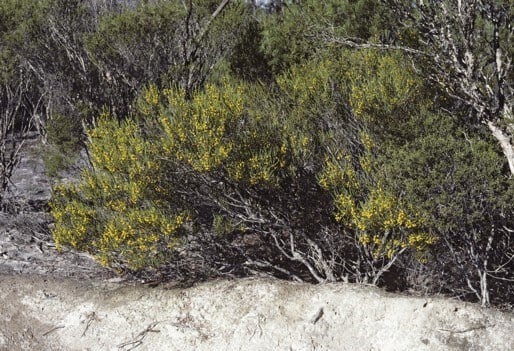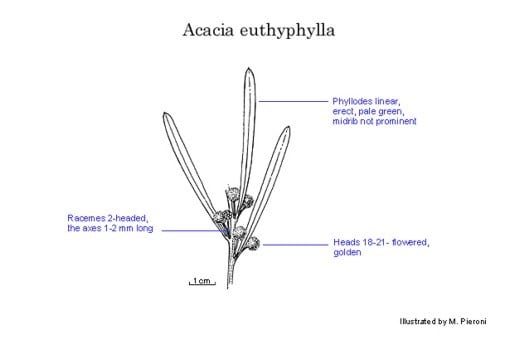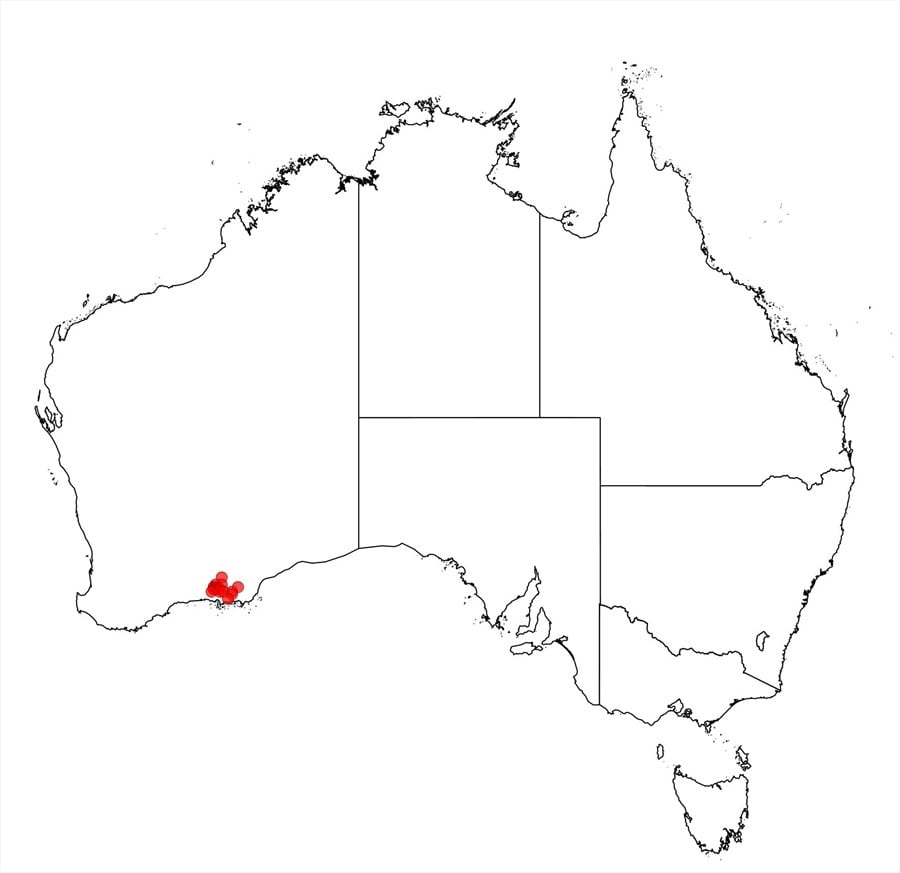Acacia euthyphylla Maslin
WATTLE
Acacias of Australia
Family
Fabaceae
Distribution
Restricted occurrence from Truslove (c. 60 km N of Esperance) E to near Clyde Hill (c. 110 km E of Truslove), south-western W.A.
Description
Dense to mid-dense rounded to funnel-shaped shrub 1–2 m high. Branchlets slightly flexuose, finely ribbed, glabrous. Phyllodes erect, linear, straight to shallowly incurved, 4–9 cm long, 2–3 (–4) mm wide, narrowed towards base, acute to obtuse-mucronulate (mucro sometimes coarsely pungent), slightly thickened, finely longitudinally wrinkled when dry, light green, glabrous; midrib not prominent; gland 1 cm or more above pulvinus. Inflorescences 2-headed racemes; raceme axes 1–2 mm long, glabrous; peduncles 5–8 mm long; heads globular, 4–5 mm diam., 18–21-flowered, golden. Flowers 5-merous; sepals free. Pods (immature) linear, to 6 cm long, 3.5 mm wide, glabrous; marginal nerve narrow. Seeds (immature) longitudinal.
Habitat
Grows in sand or clay loam, in seasonal swamps or around periphery of salt lakes and marshes, in tall mytaceous shrubland and mallee woodland.
Specimens
W.A.: 15 km SW of Mt Ney, 5 km NE of Burdett Road on Mt Ney Road, M.A.Burgman 1652 & S.McNee (PERTH); Truslove Reserve, Cox Rd, 1.5 km S of Truslove Rd intersection, 13 km NE of Scaddan, B.R.Maslin 5805 (G, MEL, NY, PERTH).
Notes
Similar in appearance to A. crassiuscula which has thicker, dark green phyllodes with prominent midribs and the gland nearer the pulvinus, cream-coloured flower-heads in much longer racemes and united sepals; its range is also quite different, as is its preference for granitic situations.
FOA Reference
Data derived from Flora of Australia Volumes 11A (2001), 11B (2001) and 12 (1998), products of ABRS, ©Commonwealth of Australia
Author
Minor edits by J.Rogers
B.R.Maslin
This identification key and fact sheets are available as a mobile application:
URL: https://apps.lucidcentral.org/wattle/
© Copyright 2018. All rights reserved.









